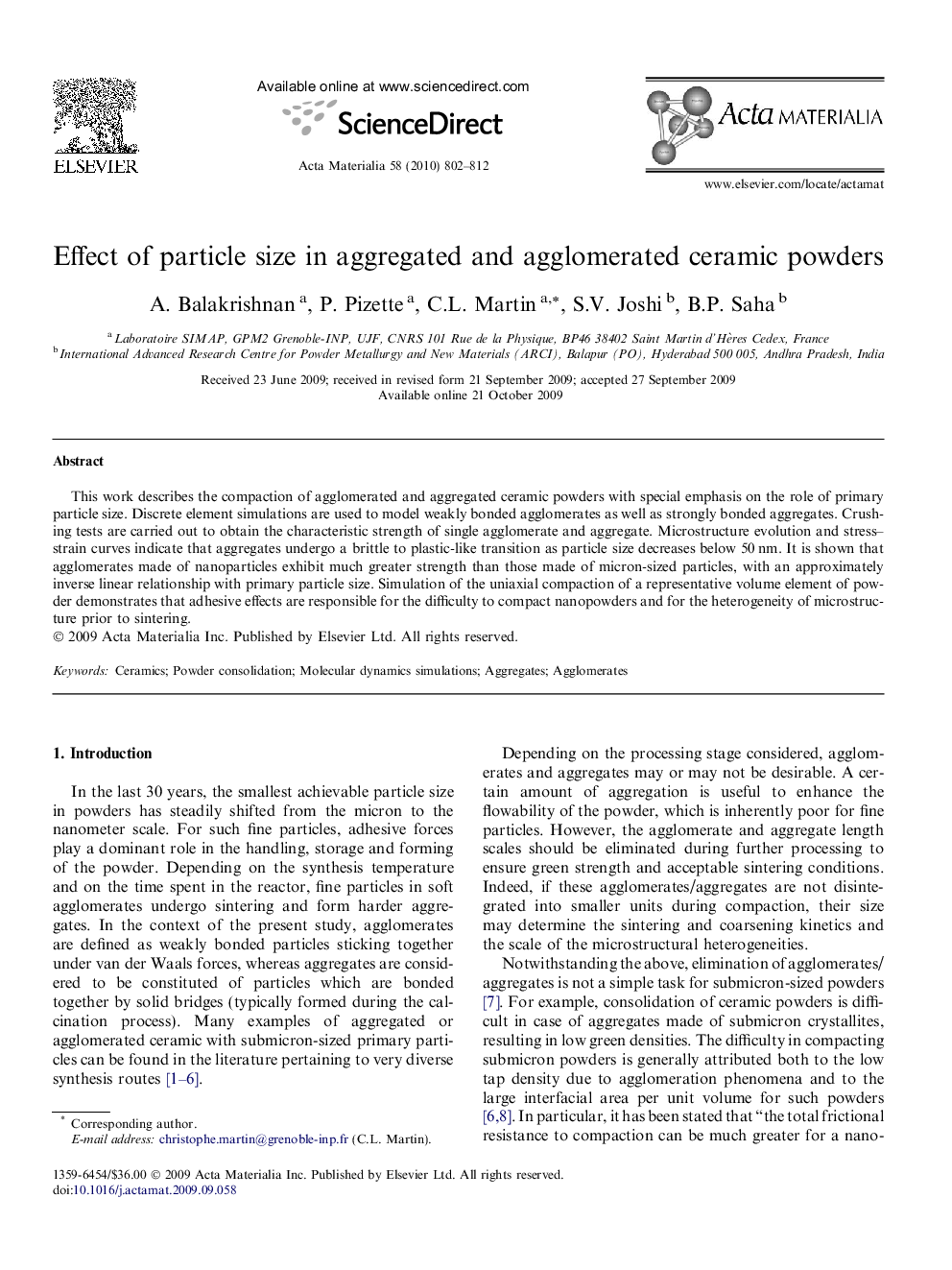| Article ID | Journal | Published Year | Pages | File Type |
|---|---|---|---|---|
| 1448625 | Acta Materialia | 2010 | 11 Pages |
This work describes the compaction of agglomerated and aggregated ceramic powders with special emphasis on the role of primary particle size. Discrete element simulations are used to model weakly bonded agglomerates as well as strongly bonded aggregates. Crushing tests are carried out to obtain the characteristic strength of single agglomerate and aggregate. Microstructure evolution and stress–strain curves indicate that aggregates undergo a brittle to plastic-like transition as particle size decreases below 50 nm. It is shown that agglomerates made of nanoparticles exhibit much greater strength than those made of micron-sized particles, with an approximately inverse linear relationship with primary particle size. Simulation of the uniaxial compaction of a representative volume element of powder demonstrates that adhesive effects are responsible for the difficulty to compact nanopowders and for the heterogeneity of microstructure prior to sintering.
